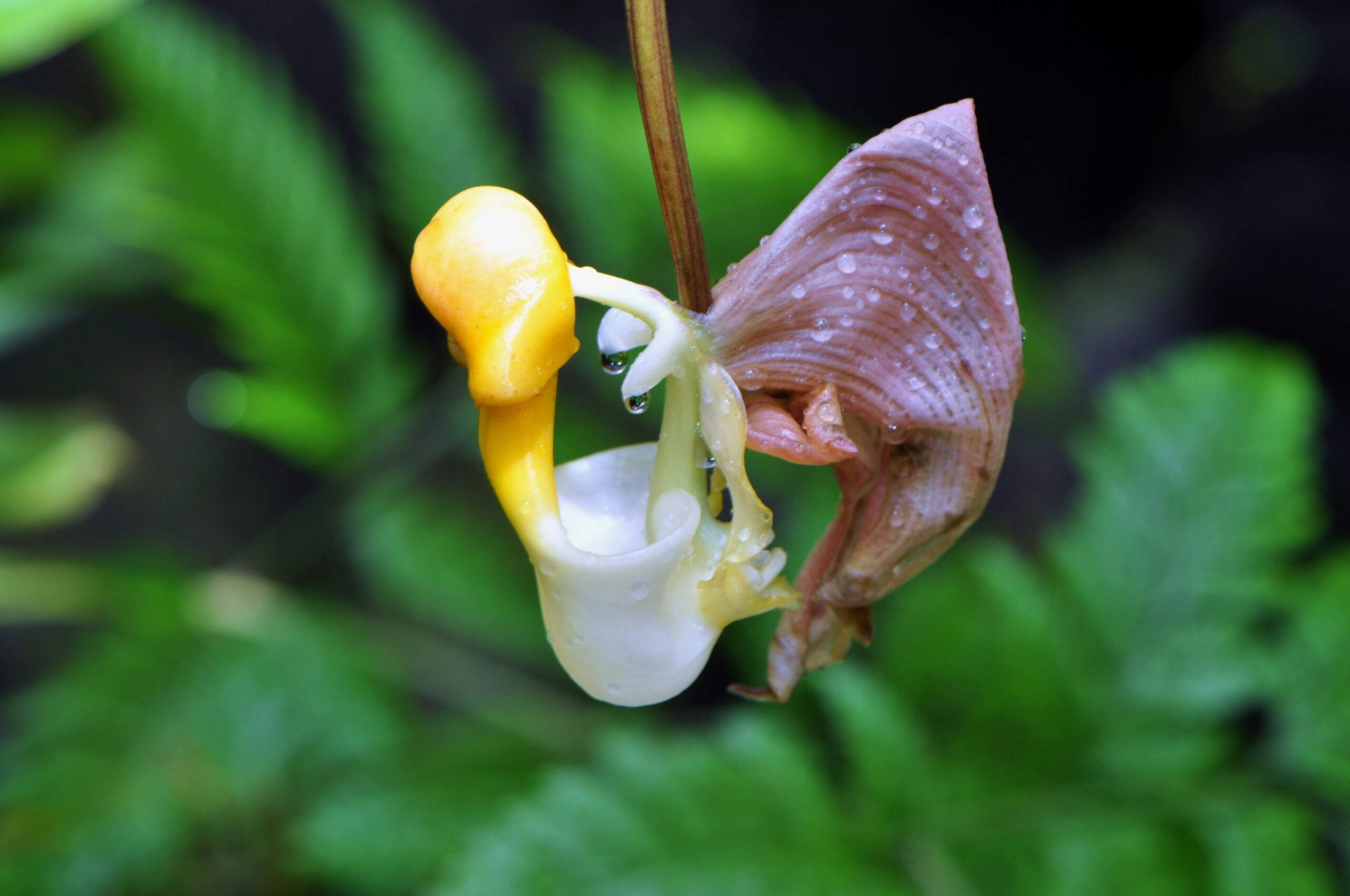The Orchid That Captures Workers
The relatively rare bucket orchid, Coryanthes, behaves almost like an animal at pollination time. This remarkable ability is essential to its survival.

Coryanthes has a steep-sided flower. Two glands extend over the center of the “bucket” and secrete a clear fluid into the flower after it opens. Just above the pool of fluid inside the bucket, a tunnel opens to the outside of the bucket. At the end of the tunnel are the flower’s pollen and stigma.
When it opens, the flower sends out a strong sweet odor that can attract male bees from over five miles away. The male bees collect a waxy material on the flower’s surface that they later use in mating rituals. As the number of bees collecting this substance off the flower’s surface increases, so does the likelihood that in the excitement one of them will fall into the pool below. When this happens, the sticky fluid makes it impossible for the bee to make it out of the “top” of the bucket-shaped flower. However, the tunnel provides an easy exit. But as the bee nears the tunnel’s end, the flower drops down a projection from the tunnel’s ceiling, holding the bee for about ten minutes before freeing him. While the bee is held, the flower glues two packets of pollen to the bee. If it should happen that the bee already has pollen packets, this activity delivers the pollen to the stigma, and pollination is complete.
The Coryanthes orchid not only shows us the Creator, but it shows us how unlimited His creativity and imagination are.
Job 9:10
“Which doeth great things past finding out; yea, and wonders without number.”
Prayer: Dear Father, no human being could plan and design the wonders we see all around us. I ask that more of us who know You and Your love for us in Jesus Christ would be bold to add our words to the witness of Your truth, so that others may not only know that You are, but that You offer us forgiveness in Your Son Jesus Christ. Amen.
Photo: Coryanthes, Walter from Tampa: St Petersburg, Florida, CC BY 2.0, Wikimedia Commons.